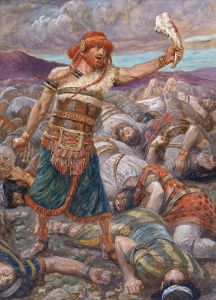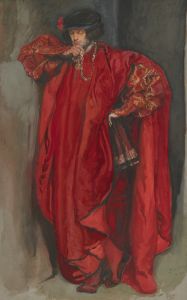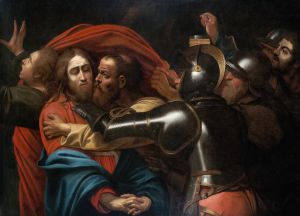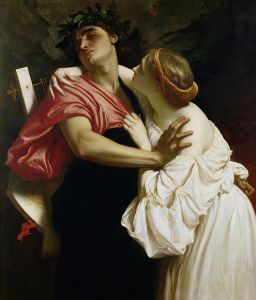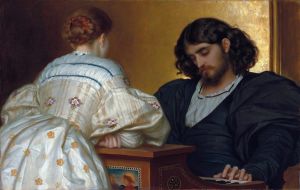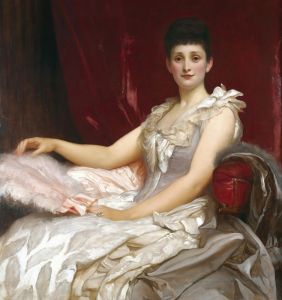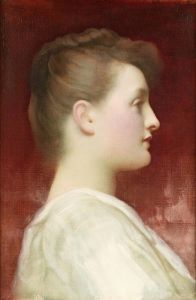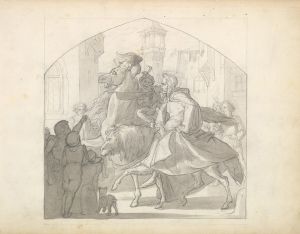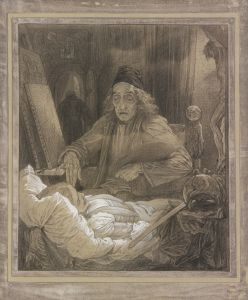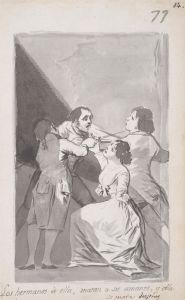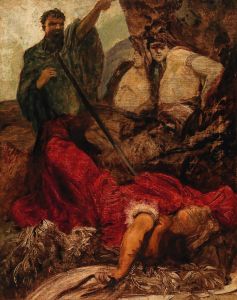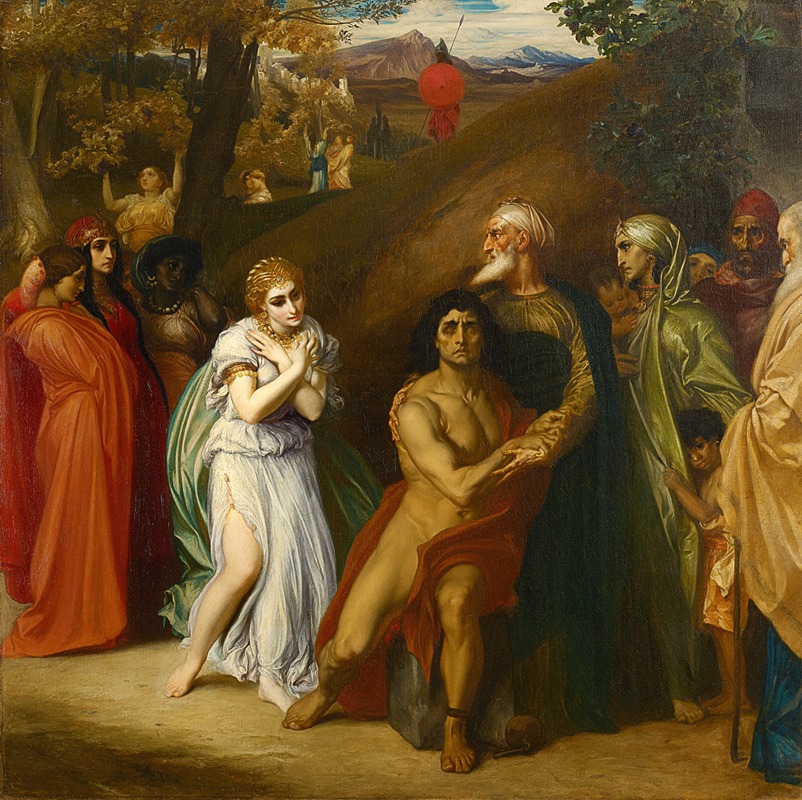
Samson and Delilah
A hand-painted replica of Frederic Leighton’s masterpiece Samson and Delilah, meticulously crafted by professional artists to capture the true essence of the original. Each piece is created with museum-quality canvas and rare mineral pigments, carefully painted by experienced artists with delicate brushstrokes and rich, layered colors to perfectly recreate the texture of the original artwork. Unlike machine-printed reproductions, this hand-painted version brings the painting to life, infused with the artist’s emotions and skill in every stroke. Whether for personal collection or home decoration, it instantly elevates the artistic atmosphere of any space.
"Samson and Delilah" is a painting by the renowned British artist Frederic Leighton, completed in 1887. Leighton, a leading figure in the Victorian art world, was known for his classical style and meticulous attention to detail. This painting is a prime example of his ability to blend narrative with classical aesthetics, capturing a moment from the biblical story of Samson and Delilah.
The story of Samson and Delilah is derived from the Old Testament, specifically the Book of Judges, chapters 13 to 16. Samson, a Nazirite with extraordinary strength, was chosen by God to deliver the Israelites from the Philistines. His strength was legendary, and it was believed to be linked to his uncut hair. Delilah, a woman from the Valley of Sorek, was bribed by the Philistine rulers to discover the secret of Samson's strength. After several attempts, she finally coaxed the truth from Samson, leading to his downfall when his hair was cut while he slept.
Leighton's painting captures the dramatic and intimate moment between Samson and Delilah. The composition is carefully constructed to emphasize the tension and emotional complexity of the scene. Delilah is depicted with a serene and composed expression, a stark contrast to the vulnerability of Samson, who is shown in a state of repose. The use of light and shadow in the painting highlights the emotional undercurrents and adds depth to the characters' portrayal.
Leighton's choice of color palette is notable for its richness and warmth, with deep reds and golds that enhance the sensual and dramatic nature of the scene. The textures of the fabrics and the careful rendering of the figures' skin tones demonstrate Leighton's skill in creating lifelike representations. The painting's composition draws the viewer's eye to the central figures, with Delilah's hand gently resting on Samson's head, symbolizing both tenderness and betrayal.
"Samson and Delilah" reflects Leighton's interest in classical themes and his ability to convey complex narratives through his art. The painting was well-received in its time, contributing to Leighton's reputation as one of the leading artists of the Victorian era. It exemplifies the academic style that was prevalent in the 19th century, characterized by its emphasis on historical and mythological subjects, as well as its technical precision.
Today, "Samson and Delilah" is part of the collection at the Leighton House Museum in London, which was once the artist's home and studio. The museum offers insight into Leighton's life and work, preserving his legacy and showcasing his contributions to the art world. The painting remains a significant example of Leighton's oeuvre, illustrating his mastery of narrative art and his ability to capture the complexities of human emotion and interaction.





